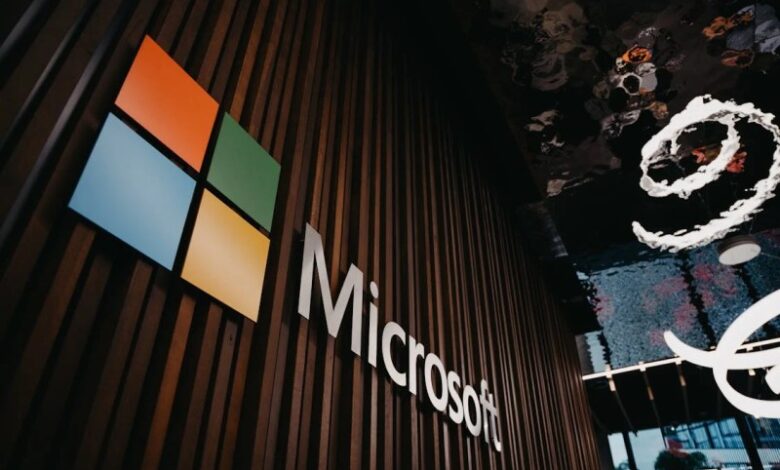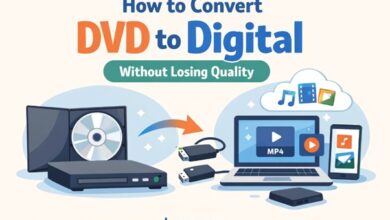50 Years of Microsoft: From MS-DOS to the Cloud, Here’s What They’ve Built

On April 5, Bill Gates, the founder of Microsoft, shared a bittersweet video on Instagram, with this message: “Unfortunately, I will never feel cool again, because this was me in the early Microsoft days.” With this emotional post, he congratulated the company on the 50th anniversary. It’s a nostalgic moment for Microsoft’s co-founder, and a testament to how far the tech giant has come.
From its humble beginnings writing software for microcomputers, Microsoft now touches nearly every corner of modern computing. As the company hits the half-century mark, it’s worth reflecting on the journey from the MS-DOS days to today’s cloud-driven world, and the innovations Microsoft built along the way.
Microsoft and the Evolution of Enterprise Networking
In early days, as enterprises connected to the broader internet, the need for secure gateways and traffic management grew. Already here, Microsoft played a role by offering proxy and firewall solutions to protect corporate networks. For example, its ISA Server (Internet Security and Acceleration Server) combined an application-layer firewall with VPN support, proxy services, and web caching.
Although we sometimes take it for granted when, for instance, using a fast US proxy from the other side of the world to access various US-based platforms, these technologies have come a long way. In fact, similar tools let businesses filter web traffic and conserve bandwidth while keeping threats out, all integrated with the familiar Windows environment. Microsoft even acquired specialized web-filtering technology to bolster these capabilities, underlining its commitment to enterprise security.
Over the decades, as concepts like “secure proxy” and content filtering became standard in IT policy, Microsoft’s ecosystem supported them, whether via on-premises servers or, more recently, cloud services. Today, the company’s enterprise networking legacy lives on in hybrid cloud offerings and features like Azure Active Directory and Microsoft Defender, ensuring that businesses can manage users and safeguard their network traffic in an age of remote work and zero-trust security.
The AI Boom
2019 was pivotal when Microsoft invested $1 billion in the AI research lab OpenAI, starting a partnership that granted Microsoft an exclusive license to advanced AI models like GPT-3. This bet on artificial intelligence quickly began to pay dividends. Microsoft’s Azure cloud became the backbone for OpenAI’s tech, meaning when OpenAI’s ChatGPT exploded in popularity, it was running on Microsoft’s cloud.
By 2023, Microsoft had doubled down with a multibillion-dollar investment to deepen this alliance, and the results started showing up in consumer products.
One of Microsoft’s breakout AI hits was GitHub Copilot, an AI coding assistant that uses OpenAI’s Codex, built on GPT, to help developers write code. GitHub Copilot gave a glimpse of how generative AI could augment work, and Microsoft didn’t stop there. The company introduced Microsoft 365 Copilot, which embeds GPT-4 into Office apps like Word, Excel, and Outlook; essentially a personal assistant for productivity.
Consumer Trust and Everyday Tools
When it comes to serving individual customers, the company impressively built trust, often encountering myriads of criticism. When Satya Nadella became the CEO in 2014, his approach was very welcoming, as Microsoft adopted more open strategies, paying attention to customers’ feedback and trying to respond with better products and services. One of the results was Windows 10 that was released as a free upgrade in 2015, for Windows 7/8 users. Isn’t this a great example of how you take your customers forward, allowing everyone to remain a part of the company’s user base?
Beyond the PC, Microsoft expanded into hardware and gaming, two areas where it had to earn consumer trust from scratch. The Xbox console, launched in 2001, eventually became a household name in gaming, but not without challenges. The 2013 debut of Xbox One drew heavy criticism for being too restrictive (it originally required an always-online connection and limited used games), leading to a PR fiasco with desperate Tweets about how “the internet won”. To its credit, Microsoft listened to the backlash: it reversed those policies before launch and later introduced backward compatibility on Xbox One, allowing players to enjoy older Xbox 360 games.
In the end, trust is built over time. Microsoft earned much of it back by doing the little things – extending support, improving security, respecting user choice, while also delivering big hits like Windows 10 and the Xbox Series X. The result is that Microsoft’s name is once again associated with reliability for consumers, whether they are booting up a PC, collaborating in a Teams chat, working in the industrial domain or playing Minecraft on an Xbox. And Bill Gates definitely remains the cool coder who founded one of the greatest tech companies.



